When you’re about to sign an apartment lease, you’re not just committing to a monthly payment—you’re choosing your home for the foreseeable future.
While the excitement of finding a new place can be overwhelming, it’s important to pause and examine the details that’ll impact your daily life.
From hidden maintenance issues to neighborhood safety concerns, what you don’t inspect now could become tomorrow’s headache.
Whether you’re a first-time renter or a seasoned tenant, there’s a thorough checklist of essential items you’ll want to verify before putting your signature on that dotted line.

Lease Terms and Conditions
When reviewing a lease agreement, you’ll need to carefully look over the terms and conditions, which outline the fundamental rules and obligations between you and your landlord.
Pay close attention to the lease duration, monthly rent amount, due dates, and acceptable payment methods.
Make sure you understand the security deposit requirements and the conditions for getting it back.
Check for specific policies regarding maintenance responsibilities, pet ownership, guest stays, and noise restrictions.
Don’t overlook the lease termination clauses, including early termination fees and notice requirements.
You’ll want to verify the utilities included in your rent and identify which ones you’re responsible for paying.
Take note of any rules about modifications to the apartment, such as painting walls or hanging decorations.
Security Deposit Details
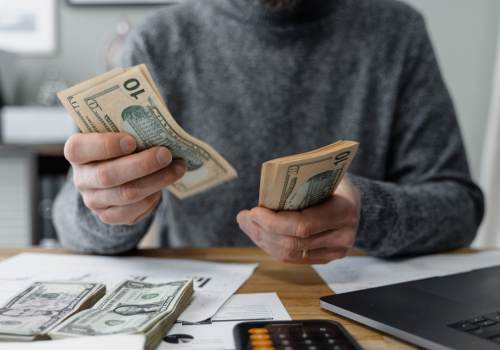
Everyone should pay special attention to their security deposit requirements, as this upfront payment typically equals one or two months’ rent.
You’ll want to carefully review the lease’s specific conditions for getting your deposit back.
Look for clearly defined terms about what constitutes normal wear and tear versus damage.
Make sure you understand the state laws governing security deposit returns, including the landlord’s deadline to return your money after move-out.
Document the apartment’s condition thoroughly during your initial walk-through, taking dated photos and videos of any existing damage.
You’ll need this evidence to protect your deposit later.
Don’t forget to verify where your deposit will be held – some states require landlords to keep security deposits in separate interest-bearing accounts and provide tenants with account details.
Utility Responsibilities
Within apartment leases, utility responsibilities can vary markedly between properties.
You’ll need to identify exactly which utilities you’re responsible for, including electricity, gas, water, garbage, internet, and cable.
Don’t assume anything – some landlords include all utilities in the rent, while others expect you to set up and pay for everything separately.
Check the lease for specific billing arrangements. You’ll want to know if you must set up accounts in your name or if the landlord handles the accounts and bills you directly.
Ask about any shared utilities in multi-unit buildings, such as water meters or heating systems.
Make sure you understand seasonal considerations, like whether you’ll control your own thermostat or if heating is building-wide.
Get estimated monthly costs for each utility to properly budget for your total living expenses.
Maintenance Policies
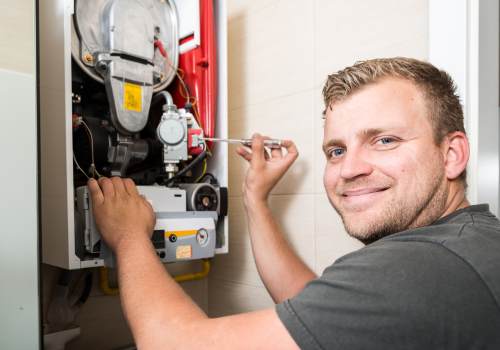
Every apartment lease should clearly outline maintenance and repair responsibilities between tenants and landlords.
Review the maintenance policies to understand who’s responsible for routine upkeep, emergency repairs, and pest control.
You’ll want to verify response times for maintenance requests and whether there’s a 24/7 emergency maintenance line.
Check if you’re required to handle minor repairs yourself, like changing light bulbs or unclogging drains.
Pay attention to restrictions on modifications you can make to the unit, such as hanging pictures or painting walls.
The lease should specify the landlord’s obligations for maintaining common areas, structural elements, and major systems like HVAC, plumbing, and electrical.
Don’t forget to confirm whether you’ll need renter’s insurance to cover your belongings in case of maintenance-related damage.
Water Pressure and Temperature
Beyond general maintenance issues, checking water pressure and temperature during your apartment inspection can prevent future frustrations.
Turn on all faucets and shower heads to test the water flow, and don’t hesitate to let them run for several minutes.
You’ll want to verify that hot water arrives quickly and maintains consistent temperature across all fixtures.
Pay attention to pressure drops when multiple water sources run simultaneously – this can reveal potential plumbing problems.
Test the water during peak usage hours, typically early morning or evening, as that’s when you’re most likely to experience issues.
If you notice weak pressure, discolored water, or temperature fluctuations, ask the landlord about recent plumbing repairs or planned upgrades.
These issues can greatly impact your daily routine and shouldn’t be overlooked.
Electrical Outlets and Switches
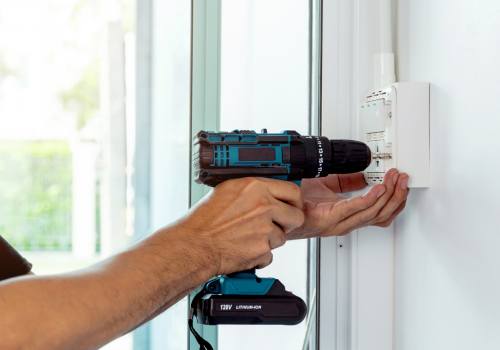
Testing the electrical system stands as a crucial step during your apartment inspection.
You’ll need to verify that every outlet works and delivers proper voltage for your devices.
Bring a basic outlet tester or phone charger to check each receptacle in every room.
Test all light switches, dimmers, and ceiling fans to confirm they’re functioning correctly.
Pay attention to any flickering lights, buzzing sounds, or warm switch plates – these indicate potential wiring issues.
Don’t forget to inspect GFCI outlets in bathrooms and kitchen areas; press their test and reset buttons to confirm they’re operating properly.
Check the circuit breaker panel for signs of rust, burning, or loose components. Make sure it’s properly labeled and accessible.
Document any dead outlets or malfunctioning switches, and request repairs before signing your lease.
Window and Door Security
After confirming your apartment’s electrical safety, you’ll want to examine all entry points carefully.
Test every window and door to verify they open, close, and lock properly.
Look for signs of forced entry, damaged frames, or compromised locks that could make your space vulnerable.
Check that ground-floor windows have secure latches and safety bars if necessary. All exterior doors should feature deadbolts and peepholes.
Sliding doors must have working track locks and security bars.
Don’t forget to inspect emergency exits – they should be easily accessible but secure from the outside.
Pay attention to the condition of doorframes, which burglars often target.
If you spot gaps, loose hinges, or worn-out strike plates, request immediate repairs before signing.
Your security shouldn’t be compromised by neglected maintenance or outdated hardware.
Mold and Water Damage
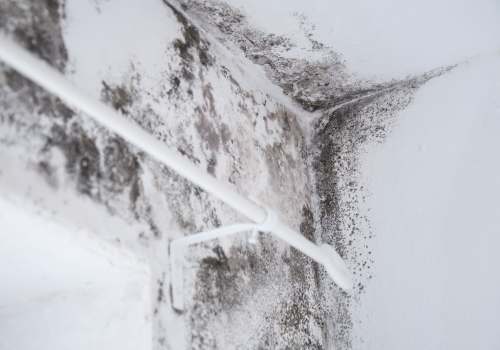
Signs of water damage in and around your apartment can reveal serious underlying problems that may affect both your health and belongings.
Look for water stains on walls and ceilings, peeling paint, warped flooring, and musty odors that might indicate hidden moisture issues.
Pay special attention to bathrooms, kitchen areas, and spaces around windows.
Check under sinks, around toilets, and behind washing machines for any signs of leaks or water damage.
Don’t forget to inspect the ceiling corners and baseboards, where mold often starts to grow.
If you spot any black, green, or fuzzy patches, that’s a clear red flag.
You’ll want documentation of these issues before signing, and you should insist that the landlord addresses water-related problems to protect your right to a habitable living space.
Noise Levels
Beyond structural issues like water damage, the acoustic environment of your potential apartment can greatly impact your quality of life.
Visit the property during different times of day, especially early mornings and late evenings, to assess noise from traffic, neighbors, and nearby businesses.
Pay attention to sound transmission through walls, floors, and ceilings. Test this by asking someone to talk in adjacent rooms while you listen.
Check for noise from building mechanicals like elevators, HVAC systems, or plumbing.
Note the proximity to loading docks, garbage collection areas, or emergency vehicle routes.
Don’t forget to review the lease for quiet hours and noise policies.
Consider upper-floor units if you’re sensitive to footstep noise, and corner units if you want fewer shared walls with neighbors.
Appliance Functionality
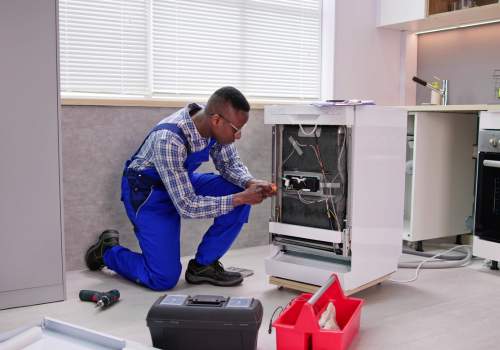
During your apartment inspection, thoroughly test every major appliance to confirm proper functionality before signing the lease.
Turn on the refrigerator, stove burners, and oven to verify they reach proper temperatures.
Run the dishwasher through a complete cycle and listen for unusual sounds.
Test the garbage disposal, microwave, and any built-in appliances included with the unit.
Don’t forget to check the HVAC system by running both heating and cooling cycles.
Inspect the water heater’s age and performance by running hot water in sinks and showers.
Document any issues you discover, including rust, strange noises, or slow performance.
If you find problems, request repairs in writing before signing the lease or negotiate these fixes into your rental agreement.
This proactive approach protects your interests and guarantees comfort in your new home.
Pest Control History
The apartment’s pest control history reveals essential information about potential ongoing infestations and management practices.
You’ll want to request documentation of past treatments and ask specifically about common pests like roaches, bed bugs, and rodents.
Don’t hesitate to check for signs of current pest activity, such as droppings or unusual odors.
Ask the landlord about their pest control protocol, including how often they schedule preventive treatments and their response time to pest complaints.
You’re entitled to know if neighboring units have had recent infestations, as pests often travel between apartments.
Make sure your lease clearly outlines who’s responsible for pest control costs and services.
If the landlord seems evasive about pest history or won’t provide clear answers, consider it a red flag.
Parking Arrangements
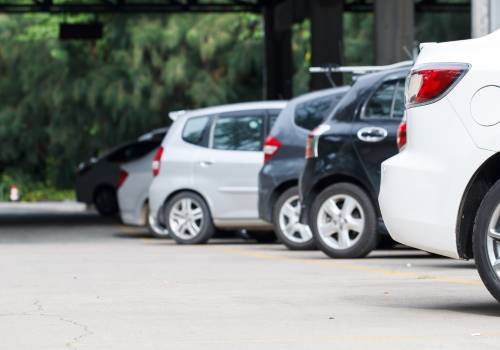
When evaluating parking arrangements, you’ll need to verify both the availability and specific terms outlined in your lease agreement.
Confirm whether you’ll get a designated spot or if parking operates on a first-come basis.
Ask about additional parking fees, as they’re often separate from your rent.
Check if your space is covered or uncovered, and verify guest parking policies and restrictions.
You’ll want to understand the towing policy, access to parking permits, and any rules about vehicle maintenance in the lot.
Don’t forget to inspect the parking area’s lighting, security features, and proximity to your unit.
If you own multiple vehicles, confirm whether you can secure additional spots and at what cost.
Get all parking-related promises in writing to protect your rights as a tenant.
Cell Phone Reception
Testing your cell phone signal throughout the apartment should be a priority during your inspection.
Walk through every room while checking your phone’s signal strength bars, and don’t forget to test the reception in bathrooms and closets.
Make test calls from different locations to verify call quality and clarity.
If you discover weak spots, ask other tenants about their experiences with different carriers.
Some buildings have signal boosters installed, so inquire with the property manager about any existing solutions.
You’ll also want to check your data speeds by running a quick speed test in various areas.
Remember, poor cell reception can impact your work-from-home capabilities, emergency communications, and daily convenience.
If signal issues exist, consider whether the building’s Wi-Fi or a personal signal booster could resolve these concerns before signing the lease.
HVAC System Performance
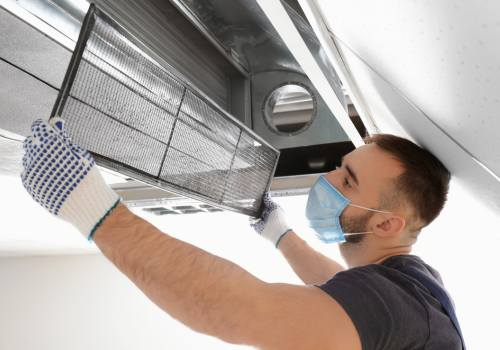
Moving from connectivity to comfort, proper HVAC system performance can make or break your living experience.
Test both the heating and cooling systems during your inspection, regardless of the current season.
Turn on the AC and verify cool air flows from all vents, then switch to heat and confirm warm air circulation.
Listen for unusual sounds like rattling, grinding, or excessive noise.
Check all vents in each room for proper airflow and inspect them for dust buildup or mold.
Ask about the system’s maintenance history and the last time filters were replaced.
Don’t forget to locate the thermostat and ascertain it’s functioning correctly. If the unit has a programmable thermostat, test its settings.
Request documentation of any recent repairs or scheduled maintenance, and confirm who’s responsible for routine HVAC servicing.
Neighborhood Safety
Security extends far beyond the apartment’s four walls, making neighborhood safety assessment essential before signing a lease.
Check local crime statistics through police department websites or apps like SpotCrime, and pay attention to specific types of incidents in the area.
Visit the neighborhood at different times of day, especially after dark, to observe street lighting, foot traffic, and general activity levels.
Notice security features like surveillance cameras, gated entrances, and well-lit parking areas.
Talk to current residents about their experiences and safety concerns.
You’ll want to evaluate the proximity to emergency services, including police stations and hospitals.
Don’t forget to assess the condition of nearby properties, as neglected buildings often correlate with higher crime rates.
Consider the walking routes you’ll commonly use and verify they’re well-maintained and properly lit.
Building Access and Security
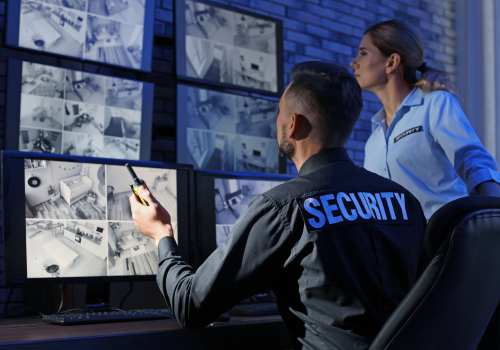
A thorough inspection of building access controls forms the foundation of your apartment security assessment.
Check the main entrance locks, keycard systems, and intercom functionality.
You’ll want to verify that all exterior doors close and latch properly, preventing unauthorized access.
Examine the building’s security camera coverage, particularly in parking areas, entrances, and common spaces.
Don’t forget to test your unit’s door locks, deadbolts, and window latches. If there’s a security desk, note its staffing hours and protocols for visitor access.
You’re entitled to ask about the frequency of lock changes between tenants and whether there’s a documented key control system.
Consider emergency exits and lighting – they’re essential for your safety.
Request information about any recent security incidents or upgrades to the building’s access system.
Storage Space
When inspecting storage options, you’ll need to evaluate both in-unit and building-wide storage spaces.
Check closet dimensions, built-in shelving, and overhead storage in each room.
Don’t forget to measure your largest items to guarantee they’ll fit in the available spaces.
Ask about basement storage lockers or dedicated storage units, if available. Verify if they’re included in your rent or require additional fees.
Inspect these areas for signs of water damage, proper ventilation, and security measures like individual locks.
You’ll also want to confirm the building’s policy on accessing these spaces and whether there are time restrictions.
If storage space is limited, inquire about the possibility of installing additional shelving or storage solutions, and get any approvals in writing from your landlord.
Emergency Exits
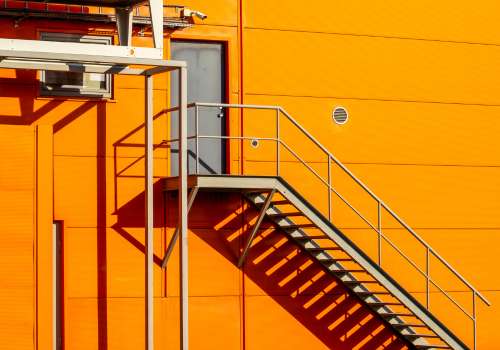
Safety considerations extend far beyond storage to include your potential escape routes during emergencies.
You’ll need to verify that your apartment has at least two separate exit paths – typically your main entrance and either a back door, fire escape, or ground-floor window.
Check that all emergency exits are unobstructed and fully functional.
Make certain you can easily open windows designated as emergency exits, and confirm that fire escapes are sturdy and properly maintained.
Don’t overlook the building’s emergency lighting and exit signs – they should be clearly visible and well-lit.
You’ll also want to locate the nearest fire extinguishers and verify they’re within their inspection dates.
If you’re above the ground floor, identify the locations of all stairwells and confirm they’re accessible without key cards during emergencies.
Pet Policies
Understanding your apartment’s pet policies represents a critical step in the lease inspection process.
You’ll need to verify whether pets are allowed at all, and if so, which types and sizes are permitted.
Check for specific breed restrictions, weight limits, and the maximum number of pets allowed per unit.
Review the pet deposit and any recurring pet rent carefully.
Many leases require a non-refundable pet fee upfront, plus monthly pet rent that’s separate from your regular rent payment.
Don’t forget to examine policies regarding visiting pets and service animals, which may have different rules.
Pay attention to requirements for proof of vaccinations, pet insurance, and any designated pet relief areas.
Make sure you understand the consequences of violating these policies, as they could lead to fines or eviction.
Internet Service Options
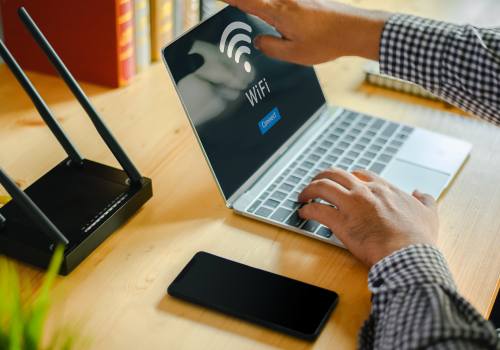
Three key aspects of internet service require careful inspection in your lease agreement.
First, verify whether internet service is included in your rent or if you’ll need to arrange it separately.
Some buildings have exclusive provider agreements that limit your choice of ISPs, so confirm which carriers serve the property.
Second, examine the building’s infrastructure – you’ll want to know if it supports fiber optic connections or if you’re limited to cable or DSL options.
Landlord Communication Protocols
Clear landlord communication protocols outlined in your lease protect both you and the property owner throughout your tenancy.
Review how you’re expected to contact your landlord for maintenance requests, emergencies, and general inquiries.
Your lease should specify whether you’ll communicate through a property management app, email, phone, or text messages.
Look for specific response time commitments, particularly for emergency situations.
You’ll want to know if there’s an after-hours emergency number and what qualifies as an emergency.
Check if the lease requires written documentation for certain requests, like maintenance or lease violations.
Additionally, confirm the protocol for giving notice before the landlord enters your unit – they should specify minimum advance notice and acceptable reasons for entry.
FAQs
Are There Any Upcoming Renovation Plans That Could Affect My Stay?
You’ll want to ask your landlord directly about planned renovations, construction timelines, and potential disruptions. Get these details in writing to protect your right to quiet enjoyment during your tenancy period.
What Is the Average Tenant Turnover Rate in This Building?
You’ll want to ask your potential landlord about tenant turnover rates. A high rate could signal management issues, while a low rate often indicates satisfied residents and a stable living environment.
How Many Other Units Are Currently Vacant on This Floor?
Like a medieval census taker, you’ll want to know about vacant units on your floor. When viewing the apartment, don’t hesitate to ask about current vacancies, as they can indicate building maintenance and community stability.
Are There Any Planned Changes in Building Ownership or Management?
You’ll want to directly ask management about any pending ownership changes or shifts. It’s essential to know who’ll be running your building, as new owners might implement different policies, fees, or renovation plans.
What Floor Cleaning Products Are Allowed on the Specific Flooring Materials?
Don’t let your floors take a beating! You’ll need to ask your landlord about approved cleaning products for hardwood, tile, or carpet, as using the wrong cleaners can damage surfaces and violate lease terms.
Final Thoughts
Want to avoid costly mistakes and future headaches when renting your next apartment?
You’ll save yourself significant stress by thoroughly inspecting these 21 essential elements before signing on the dotted line.
Remember, you’re not just choosing a place to live – you’re entering a legally binding agreement.
Take control of your rental experience by conducting these crucial checks and documenting everything during the inspection process.